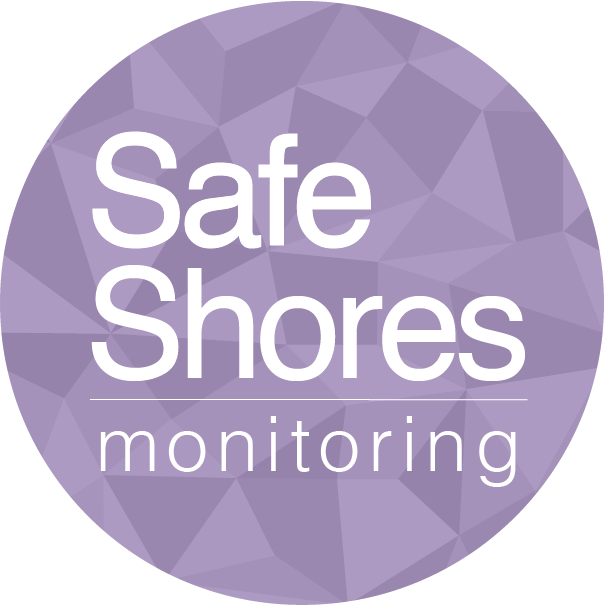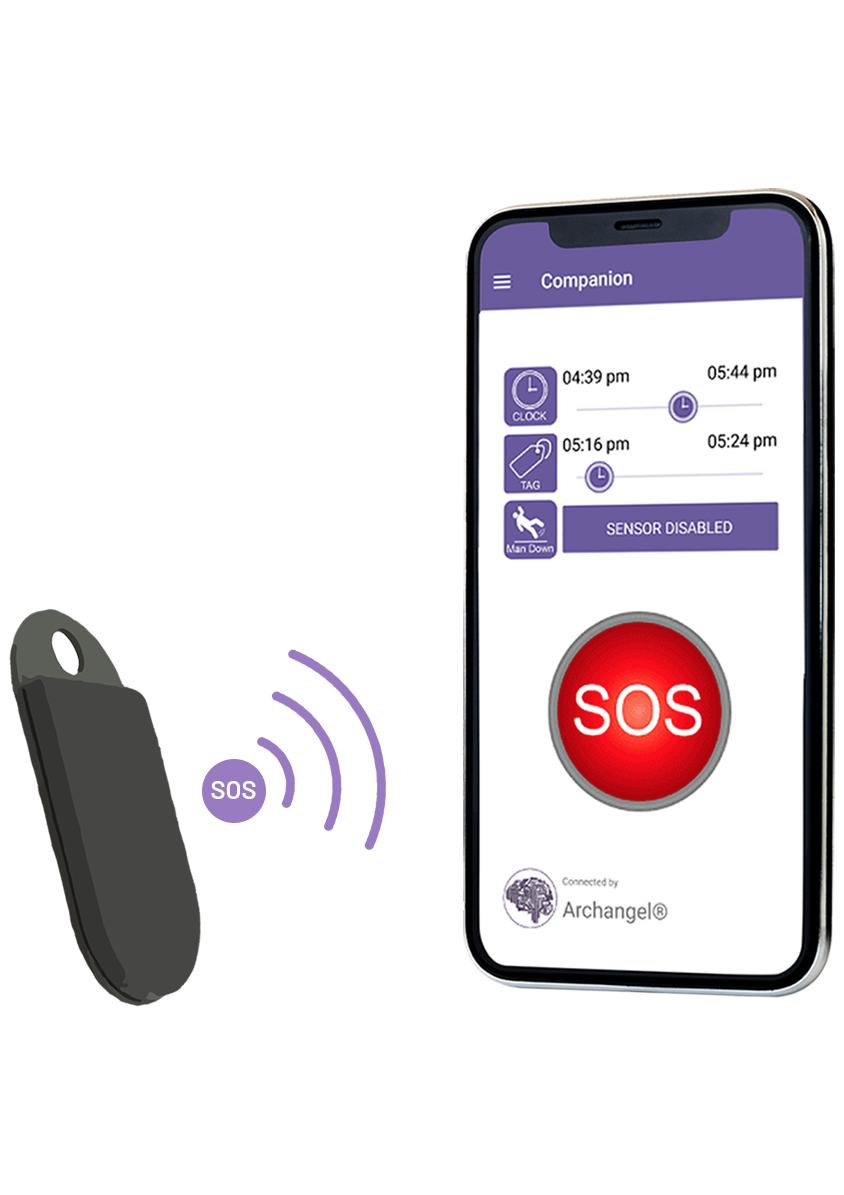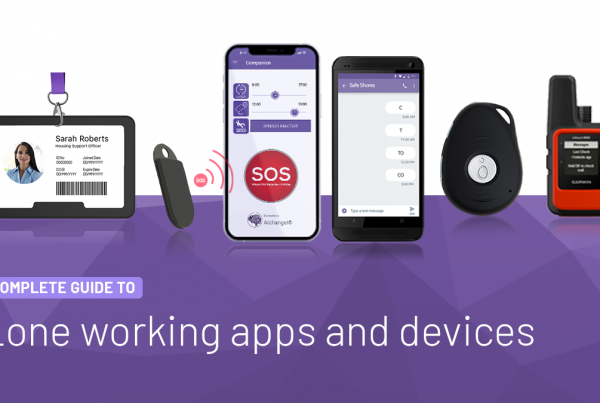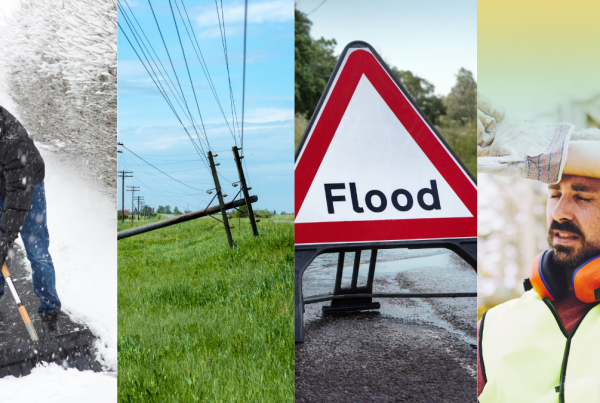 In the world of property management, it’s common to find employees lone working. Working across residential and commercial properties, often with members of the public, property managers, estate agents, housing officers and landlords can often find their personal safety is at risk.
In the world of property management, it’s common to find employees lone working. Working across residential and commercial properties, often with members of the public, property managers, estate agents, housing officers and landlords can often find their personal safety is at risk.
What risks exist towards property managers and estate agents, and how can these risks be managed?
Risks of lone working for estate agents and property managers
Violence and aggression
 Property managers, estate agents and other roles working within the housing space will often find themselves working in environments where the risk of violence or aggression is high.
Property managers, estate agents and other roles working within the housing space will often find themselves working in environments where the risk of violence or aggression is high.
Working with clients behind closed property doors, especially in the current hostile and volatile housing market, can often lead to clients becoming stressed and impatient. This can lead to violence and aggression against innocent estate agents who are just trying to do their jobs. Additionally, these same estate agents will often work within areas of high crime, which also threatens their personal safety.
In 2016, the Suzy Lamplugh Trust, a trust set up in memory of Suzy Lamplugh, a young estate agent who disappeared while showing a client around a house in Fulham, worked with ComRes to survey 250 estate agents to assess the extent to which employees in this sector feel at risk while at work. One in five said they had conducted a property viewing where they felt unsafe, and for female estate agents, this was nearly a third. A further 7% of respondents stated that they had been threatened.
For property managers, including housing officers and landlords, there’s also an increased risk of violence and aggression when delivering bad news. Serving eviction notices and responding to complaints as part of the role can often create a tense environment for these lone workers which can result in verbal and physical abuse. In 2017, there were 239 recorded physical assaults against housing staff across 300 councils and 27 housing associations.
Environmental risks
Working across a range of residential and commercial properties can present a range of environmental risks for lone workers in housing.
For example, many workers will find themselves showing clients around unfamiliar properties, which can include visiting premises that are in a state of poor repair or contain hazardous substances. This could present workplace hazards such as slips, trips and falls, electrical hazards, falling objects and can expose workers to hazardous substances such as asbestos. These same risks can affect housing workers who often carry out home repairs and property maintenance.
Another environmental risk that can impact the personal safety of estate agents and property managers is their physical location. Many lone workers in housing will find themselves working in remote and rural locations, where there is a limited number of other people present in public, and access to reliable phone signals may be limited.
Travel risks
 Travel is a large part of an estate agent and property managers day. Travelling between properties and locations, often in hazardous road conditions and weather, can put employee health and safety at risk. A 2020 study by University College London found that more deaths occur from road travel whilst working than at the workplace.
Travel is a large part of an estate agent and property managers day. Travelling between properties and locations, often in hazardous road conditions and weather, can put employee health and safety at risk. A 2020 study by University College London found that more deaths occur from road travel whilst working than at the workplace.
In the 2016 Suzy Lamplugh Trust report on personal safety in the housing sector, over a quarter of respondents were concerned about travelling in a private vehicle with others.
Safety measures to adopt as a lone worker in housing
In order to manage personal safety risks as a lone worker in housing, and provide some reassurance to the employee, a number of precautions can be taken.
- Conduct a risk assessment – Before visiting a new client or location, ensure an extensive risk assessment is carried out to identify all new and relevant risks to the health and safety of not only the lone working employee, but also the clients and visitors of the premises.
- Check the authenticity of the client – Before a visit with a client, do a little extra digging to ensure that their details are genuine. Consider meeting the client at your workplace or office base so that other employees could identify them.
- Share your schedule – Let a colleague know where you are at all times and who you will be meeting. Ensure that your client visit or task is recorded in a shared calendar and the details of the person you are visiting is known to other colleagues.
- Have a line of communication in place – Having an emergency line of communication in place between yourself and either a colleague or a 24-hour alarm receiving centre helps to ensure that communication can be in place in the event of an emergency. This could be through a phone call, or ideally, through a lone worker safety device.
- Use lone worker safety devices – Offer all lone working staff members with a lone worker safety device. Having a discreet and resilient solution in place ensures that lone workers in housing can record their activities, receive welfare checks and raise an SOS in the event of an emergency.
- Have a response plan in place – In the event of an emergency, or in the event that you cannot get a hold of an individual, a response plan must be followed. A response plan includes steps to follow in emergency situations, including next of kin contacts, establishing their last location and steps, and contacting the emergency services after other steps are exhausted.
.
.. - Have a lone worker policy – Ensuring a lone worker policy is in place helps all employees in an organisation understand certain risks, roles and responsibilities for themselves and other members within the organisation. A lone worker policy also helps to outline mitigation measures. Click here to learn more about lone worker policies, and download your free template.
Lone worker protection for estate agents, property managers and housing staff
For estate agents, property managers, housing officers and other personnel within the housing sector, Safe Shores Monitoring can provide a full safe system of work. We do this through our range of lone worker safety apps and devices, which all connect to our lone worker safety management system, Archangel®.
Our discreet and resilient lone worker app, Companion, coupled with our Ally Bluetooth Button, can provide valuable protection for lone workers in housing. With a range of comprehensive features, lone workers can work with confidence and reassurance of their safety.
The Companion Lone Worker App features:
- CLOCK – Enabling you to clock on and off at the start and end of your working day
- TAG – A Timed Activity Guard that sets a timer for welfare checks when you are visiting a client
- SOS – An in-app SOS button, with screen lock override, and a physical SOS button through ally, to raise an SOS in emergency situations
- Sensor – A configurable inactivity and impact sensor that raises welfare alarms in the event of a slip, trip, fall or any other kinds of impact.
The Companion App syncs directly to our Archangel® system, where our 24-hour Alarm Receiving Centre, or your organisation, can:
- Respond to lone worker SOS and Welfare Alarms
- Follow detailed response plans to ensure that lone workers are safe
- View live locations and location history in the event of an emergency
- Assign lone workers with safety profiles and dedicated profiles
To learn more about Archangel and our suite of safety solutions for lone workers, click here.
Disclaimer: the information provided in this article is for general guidance only and is not legal advice. This article is not a substitute for Health and Safety consultancy. For legal advice, you should seek independent advice.
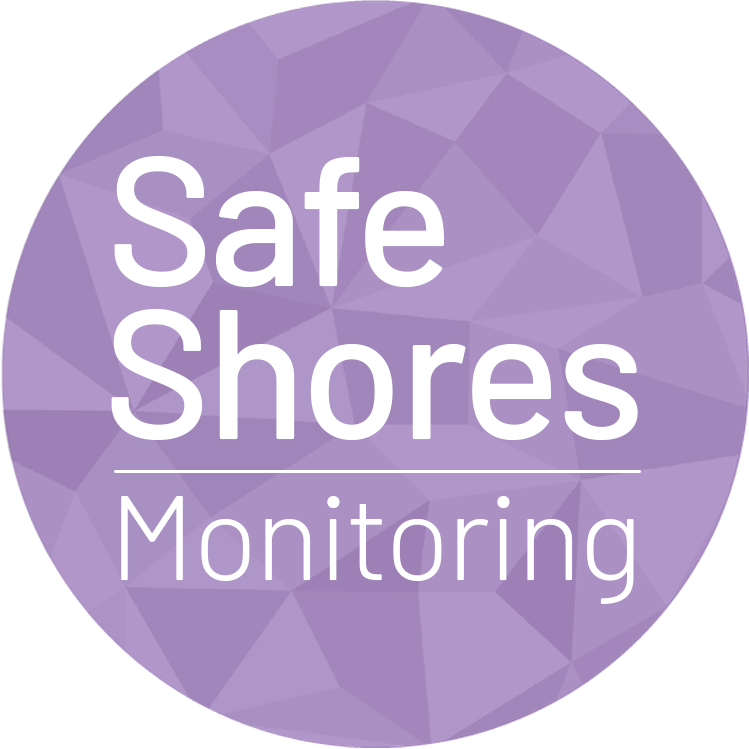
To find out more about Safe Shores Monitoring and out mission to Protect, Assure and Respond to all lone workers and their requirements, please click here.
